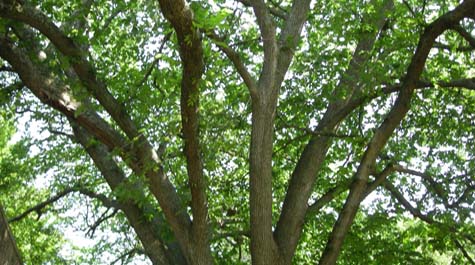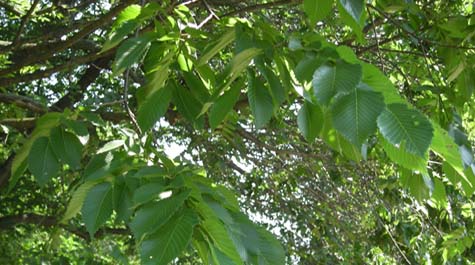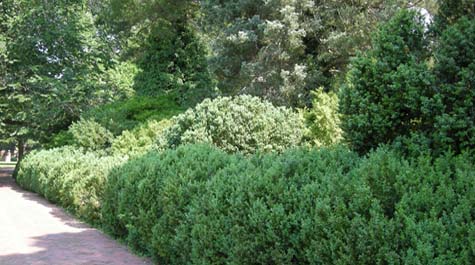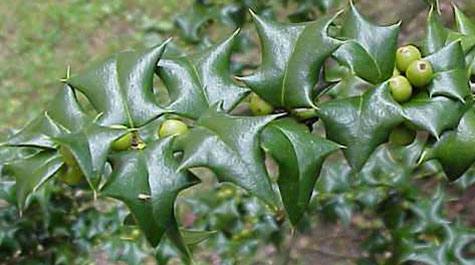Ewell Hall
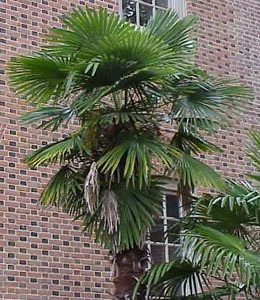 The protected niche formed by Ewell Hall (and warmed by the College's underground steam tunnels) shelters a verdant alley of hybrid hollies (a cross of Ilex cornuta and Ilex pernyi) and two windmill palms (Trachycarpus fortunei). The palms, like the corktree at Washington Hall, are usually found only as far north as South Carolina. Recognizing Williamsburg's buffered climate and the possibility of locating plants in tailored microclimates, Professor Baldwin achieved great success with many unlikely exotic varieties.
The protected niche formed by Ewell Hall (and warmed by the College's underground steam tunnels) shelters a verdant alley of hybrid hollies (a cross of Ilex cornuta and Ilex pernyi) and two windmill palms (Trachycarpus fortunei). The palms, like the corktree at Washington Hall, are usually found only as far north as South Carolina. Recognizing Williamsburg's buffered climate and the possibility of locating plants in tailored microclimates, Professor Baldwin achieved great success with many unlikely exotic varieties.
Two unusual and exotic conifers can be found here as well, between Ewell and Jefferson halls. In the center of the courtyard is the small monkey puzzle from Chile and Argentina (Araucaria araucana), so named because it should “puzzle a monkey to climb that!” Carefully feel the triangular-shaped leaves that completely cover all branches and trunk and you will understand. In the NE corner of Jefferson is the Asian yew plum pine (Podocarpus macrophyllus) with its strap-shaped leaves.
As you walk around the east side of Ewell, a central feature is the huge American elm (Ulmus americana) dominating this space.
The area alongside the Wren Courtyard wall is planted in boxwood of many types. Some varieties represented here include curly-locks boxwood (Buxus microphylla 'curly-locks'), hardwick boxwood (Buxus sempervirens 'hardwickensis'), littleleaf boxwood (Buxus microphylla), Harlands boxwood (Buxus harlandi), and Vardar Valley boxwood (Buxus sempervirens 'Vardar Valley'). See if you can find the subtle differences between specimens.














